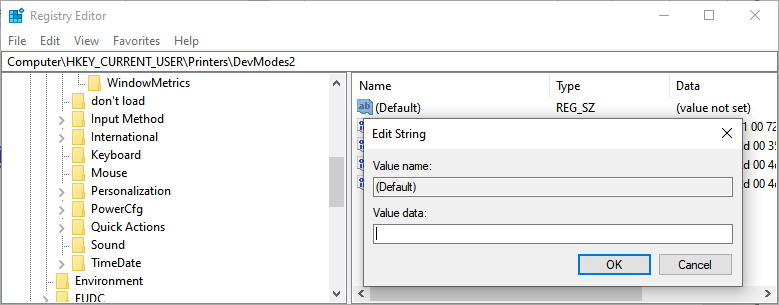You change information in the Registry by using the Registry Editor to change the contents of a value. Here's the simplest way to make your changes:
- Start the Registry Editor, as you normally would.
- Locate the value you want to change. (You can look for it manually by drilling down through keys and values or you can use the Find feature in the Registry Editor.)
- Either double-click the value name at the right side of the Registry Editor or highlight the value and press Enter. You'll see a dialog box that allows you to change the value's contents. (See Figure 1.)

Figure 1. The Registry Editor allows you to change Registry values.
- Make your changes, as desired.
- Click OK.
Remember that when you change values in the Registry, the effect of those changes may not be immediately apparent. In many cases, you'll need to restart Windows—and thereby force it to reload the Registry—in order to see the results of your change.
Author Bio
Allen Wyatt
With more than 50 non-fiction books and numerous magazine articles to his credit, Allen Wyatt is an internationally recognized author. He is president of Sharon Parq Associates, a computer and publishing services company. Learn more about Allen...
Understanding Footnotes and Endnotes
Footnotes and endnotes are often used in scholarly and formal writing as a way to provide additional information about a ...
Discover More
Making AutoComplete Work for an Entire Column
AutoComplete is a great feature for quickly adding data to a worksheet. If you are confused by why some things are picked ...
Discover More
Converting PDF to Excel
Reports and other formal documents are often distributed in PDF format so that they can be read and printed on a variety ...
Discover More
Hiding Folders Under This PC
File Explorer is a virtual necessity when it comes to navigating the file system. If you find it a little too verbose, ...
Discover More
How the Registry is Organized
There may come a time when you need to view or even modify the registry. In such a case, it's good to know how the ...
Discover More
Exporting a Portion of the Registry
Windows wouldn't function if it weren't for the Registry, and many system tweaks involve editing it. Before making such ...
Discover More

![]()
![]()
![]() This tip (10956) applies to Windows 7, 8, and 10.
This tip (10956) applies to Windows 7, 8, and 10.
Comments